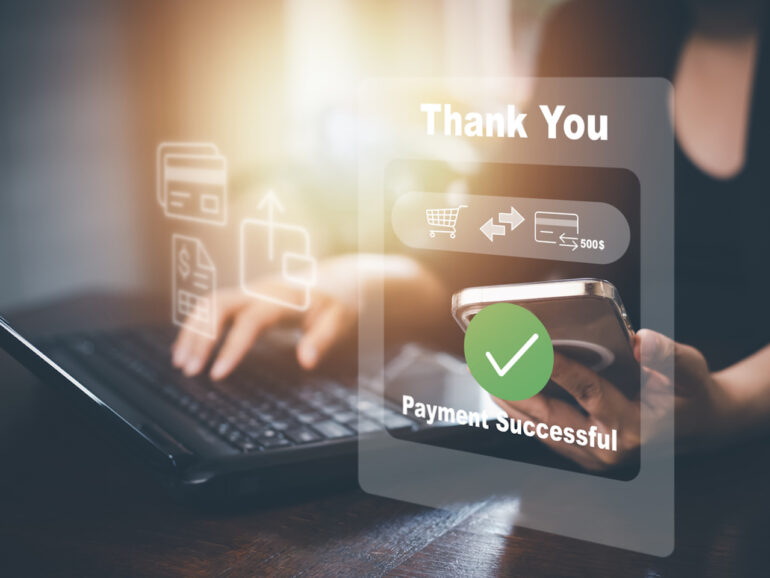Despite card payments now out-ranking ACH and checks as the payment method of choice for bills, 37% of American billpayers still use them regularly. ACH offers a better alternative to the friction and speed of checks, but users still experience problems.
“Today, there are still trillions of dollars of business that runs on ACH and checks,” said Chiro Aikat, EVP, U.S. Market Development, Mastercard.

He explained that the challenges associated appear on a number of fronts, ranging from human error when inputting data to the speed associated, resulting in late fees when transactions haven’t been conducted as planned. Fraud has also become an increasing issue, with check fraud almost doubling over the past year and account takeovers affecting 22% of households.
“Today’s digital consumer seeks choice and value in every payment interaction,” he explained. “They also look to gain more power and control over their finances, especially for everyday expenses like monthly bills.”
Elsewhere in the world, Pay by Bank has already become an attractive alternative for online payments. Connected directly to the customer’s bank, the payment method bypasses some friction involved in online payments, authenticating transactions through the customers’ phone.
“Where a consumer today or merchant today is using ACH, pay by bank strengthens that value proposition and makes the consumer experience easier,” Aikat continued. “It’s also about making payments safer.”
In October 2023, Mastercard and JP Morgan took their Pay-by-Bank solution live, leveraging Mastercard’s open banking technology to streamline the bill-paying experience.
Streamlining Bill Payments
The offering implements several capabilities that target pain points associated with ACH and checks for bill payments.
Aikat explained that biometrics can be used to authenticate transactions by tapping into the existing protocols of the bank. The solution also uses the AI assets acquired through Mastercard’s acquisition of Finicity in 2020, giving each transaction an added layer of security.
“The second important part is we have built a model for predictability,” Aikat said. He continued, explaining that the solution can use customer’s consented data to understand the probability of the bill payment clearing and the most optimal day for the bill to be paid. This information can then be shared with the merchant to give them transparency over the payment.
“It’s about bringing predictability and giving you some assurance to minimize the fees and the overhead costs that both the merchant and the consumer will face. And it’s also about the consumer experience, so I’m no longer looking for my checkbook, and my bank account number is. It’s a very seamless experience for the consumer.”
Only one part of its potential
While Mastercard and JP Morgan’s offering seeks primarily to enhance ACH for bill payments, in Europe, pay-by-bank or open banking payments are increasingly used as an alternative to card payments in e-commerce as well as for bill payments.
Like Mastercard’s offering, solutions connect to customers’ bank accounts and integrate biometric authentication to validate transactions. However, payments are often instantaneous, giving merchants instant confirmation and verification that the transaction has been settled. Costs are also, in many cases, lower than card processing fees. When asked about merchant costs for Mastercard’s solution, Aikat explained costs are set on a project-by-project basis.
Many merchants in Europe, concerned by rising card processing fees, have opted to include open banking payments at checkout. Customers, too are attracted to the payment method, in July 2023, the UK Open Banking network recorded 11.4 million payments in that month alone. Year on year, open banking payment transaction volume had increased by 102.3% between 2022 and 2023.
As regulators in the US start to make moves toward implementing guidelines for open banking and instant payments, development could be driven in the pay-by-bank space.
Aikat remained skeptical of pay-by-bank gaining significant portions of card payment market share in the US, regardless of whether the payments were instantaneous. “The value proposition of debit cards in the US universally across any type of payment you want to make is extremely strong from a consumer standpoint,” he said. “It’s going to be hard for a different type of payment mechanism or payment to replace it. I think you have to at least be equally good, if not better, with everything that a consumer, a merchant, and a bank get from a debit card perspective to get adoption of a different payment mechanism.” He explained that pay-by-bank does, however, give customers an additional choice when paying bills via ACH.
RELATED: UK reaches milestone of 5 million open banking users


